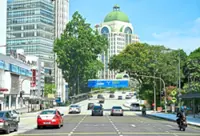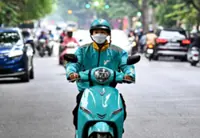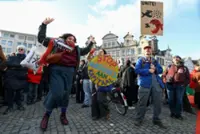Randolph Street in Chicago which, like many other US cities, was built for cars. Photo: dpa/Chicago Tribune/newscom/Terrence Antonio James
In the illustration, a sun-splashed residential block is lined with spindly trees as tall as the buildings, a bike lane bustles with riders, people cross the street by foot or wheelchair – and there’s not a driver in sight. “Make streets safer for Chicagoans who walk, bike, roll and ride,” the picture’s label reads.
The image was part of the city’s recent pitch to aldermen about a sweeping transit-focused development ordinance, dubbed “Connected Communities”, which passed in July as part of Mayor Lori Lightfoot’s bid to combat segregation and gentrification.
Already a subscriber? Log in
Save 30% OFF The Star Digital Access
Cancel anytime. Ad-free. Unlimited access with perks.





